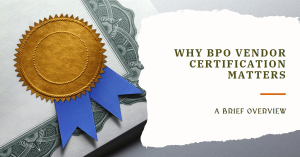Estimated reading time: 7 minutes
Key Takeaways
- Virtual assistants (VAs) help property managers reduce overheads, streamline workflows, and stay focused on revenue-driving work.
- Delegate recurring tasks like tenant communication, lease admin, maintenance coordination, rent collection, and marketing to gain immediate efficiency.
- Prioritise candidates with industry experience, clear communication, strong organisation, and software proficiency.
- A simple hiring path—define, source, screen, verify, and onboard—builds momentum and reduces risk.
- Proactive playbooks for time zones, communication norms, and data security prevent friction and protect your operation.
Table of contents
Introduction
Hiring a virtual assistant for property management means engaging a remote professional to handle routine and specialised tasks. The approach mirrors a broader shift toward digital operations across industries. By assigning work to a virtual assistant, a property manager can improve efficiency, scale smoothly, and elevate the tenant and owner experience.
As demand for flexible support grows, virtual assistants present an attractive route to leaner operations and lower costs. With routine tasks delegated, managers can focus on strategy, growth, and stronger tenant relations. The result: fewer bottlenecks and faster execution.
“Delegate outcomes, not just tasks. Clarity compounds productivity.”
Benefits of Hiring a Property Management Virtual Assistant
Cost Savings
VAs reduce labour, office, and equipment expenses. Many firms report substantial operating cost reductions when shifting routine work to remote support—making the model viable for portfolios of any size.
Greater Efficiency
Repetitive administrative work drains internal bandwidth. Delegating back-office tasks enhances responsiveness and agility, freeing your on-site team to handle high-value responsibilities.
Flexibility and Scalability
Remote assistance adapts to growth or seasonal peaks. You can scale hours and duties without the fixed overhead of additional full-time staff.
Stronger Tenant Communication
Consistent, prompt communication improves satisfaction and retention. A VA can triage queries, resolve issues, and maintain reliable channels—reducing disputes and elevating the rental experience.
Key Responsibilities to Delegate
Tenant Communication
- Answer email, phone, or chat questions
- Address concerns and complaints
- Send updates and notices
- Handle social media messages
Assigning these tasks ensures tenants receive swift, professional responses—building trust and encouraging renewals.
Lease Management
- Draft and update agreements
- Oversee renewals
- Check compliance with local regulations
- Keep accurate records of terms and conditions
Thorough administration reduces disputes and supports smooth tenancy transitions.
Maintenance Coordination
- Schedule repairs
- Track work orders
- Liaise with contractors
- Confirm completion and quality
Efficient coordination protects asset value and boosts tenant satisfaction.
Rent Collection
- Send reminders
- Monitor payments
- Manage arrears
- Support automated payment systems
A structured process strengthens cash flow and reduces time spent on late fees.
Financial Administration
- Maintain books
- Prepare budgets
- Produce reports
- Record income and expenses
Accurate oversight clarifies performance and informs growth plans.
Online Marketing
- Post listings across platforms
- Update the property website
- Manage social media profiles
- Create brochures and email campaigns
Effective marketing attracts qualified applicants and shortens vacancies.
Tenant Screening
- Conduct background checks
- Review applications
- Verify references and employment
- Ensure fair housing compliance
A rigorous approach secures dependable tenants and minimises future issues.
Back-Office Support
- File and organise documents
- Book appointments
- Draft correspondence
- Maintain digital records
Reliable administration underpins a tidy, compliant operation.
Essential Skills to Seek
- Industry Experience: Familiarity with leasing, maintenance, and regulations accelerates onboarding.
- Clear Communication: Professional writing and speaking enable smooth interactions with tenants and vendors.
- Organisation & Multitasking: Prioritisation keeps many parallel tasks on track.
- Tech Proficiency: Comfort with property management platforms and collaboration tools ensures seamless integration.
The Hiring Process
- Define Duties: Document tasks, targets, workflows, and success criteria.
- Source Candidates: Consider freelance marketplaces, staffing agencies, or referrals based on budget and urgency.
- Screen and Interview: Assess technical ability and cultural fit; use video to validate communication.
- Check References: Verify reliability and results; add background checks where appropriate.
- Onboard and Train: Provide access, SOPs, and shadowing; set SLAs and feedback cadence from day one.
Tip: Start with a 2–4 week pilot and expand responsibilities based on demonstrated mastery.
Tools for Remote Property Management
Property Management Software
Use robust platforms to manage leases, payments, maintenance tickets, tenant portals, and reporting.
Communication Platforms
Slack, Zoom, or Microsoft Teams support quick updates, video calls, and group discussions.
Project Management Tools
Trello or Asana track tasks, deadlines, and progress for cross-functional clarity.
Challenges and Solutions
- Communication Gaps: Establish weekly 1:1s, shared dashboards, and response SLAs; encourage concise written updates.
- Time Zone Differences: Set overlapping hours or fully asynchronous handoffs with clear due dates and owners.
- Data Security: Use SSO, least-privilege access, encrypted storage, and password managers; train on privacy and compliance.
Document everything. Clear SOPs and checklists turn tacit knowledge into repeatable, auditable processes.
Case Study
A mid-size management firm with 1,200 units sought growth without adding local staff. By assigning lease renewals, tenant support, and marketing to remote assistants, the company expanded to 1,560 units within a year. Vacancy rates dropped from 7% to 4%, and operating margins improved due to lower payroll costs and faster response times.
Key takeaway: Start with clear KPIs (response times, renewal rates, vacancy days) and review them weekly to sustain compounding gains.
Conclusion
A well-selected virtual assistant can elevate property management by cutting costs, boosting efficiency, and enhancing tenant relations. With careful planning, thorough screening, and crisp communication, you can unlock a reliable operating rhythm. Free your local team to focus on strategy, portfolio growth, and long-term profitability.
FAQs
What does a property management virtual assistant do?
A property management VA handles recurring tasks such as tenant inquiries, lease administration, maintenance coordination, rent collection support, marketing, screening, and back-office documentation—freeing managers to focus on high-value work.
How many hours should I start with?
Begin with 10–20 hours per week for the first month to validate workflows and SLAs. Scale up as volume, complexity, and trust increase.
Which tasks should I delegate first?
Start with high-frequency, well-defined tasks: tenant messages, maintenance ticket triage, listing updates, payment reminders, and document filing. Then layer in lease renewals and screening.
How do I ensure data security with a remote assistant?
Implement SSO, role-based permissions, MFA, encrypted storage, and password managers. Provide privacy training and restrict access to the minimum necessary systems and data.
What tools do I need to manage a VA effectively?
Use property management software for core operations, a communication suite (e.g., Slack and Zoom) for fast coordination, and a project tracker (e.g., Trello or Asana) for tasks, due dates, and SOPs.
What is a reasonable hourly rate for a property management VA?
Rates vary by experience and region. Set a budget band, define expected outcomes and SLAs, and pilot with clear KPIs to ensure value aligns with cost.







